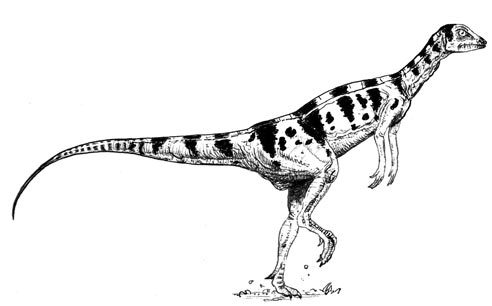Dinosaur Dreaming Digs up Remarkable Wallaby-Like Dinosaur
Annual Dinosaur Dreaming Event digs up Aussie Dinosaur that looked like a Wallaby
The Annual dinosaur dreaming event in Australia discovers a dinosaur that looked like a walllaby.
Wallabies, a small kangaroo-like marsupial (family Macropodidae) are native to Australia, making up part of the unique wildlife of that huge country. However, wallaby-like animals may have roamed Australia millions of years before as the fossilised bones of a wallaby-like dinosaur have been found in an excavation south-east of Melbourne.
Each year in the south-eastern part of Australia, scientists from the Victoria state museum and Monash University organise volunteers to come and have a go at digging up dinosaurs from Australia’s Cretaceous past at a number of palaeontological sites near to the town of Inverloch about 100 miles south-east of Melbourne. The event is known as “Dinosaur Dreaming” and since its inception in 1992 groups of amateur palaeontologists have helped to uncover many thousands of dinosaur bones, teeth and other fossil specimens from fossiliferous strata dating back 120 million years or so.
In this years, six week long event, more than 400 bones and teeth have been found, but for one of the event co-ordinators, Lesley Kool of Monash University’s School of Geosciences, the discovery of a wallaby-like dinosaur skeleton is the star find.
Commenting on the finding of these fossilised remains, she stated:
“Four limb bones very close together, within centimetres of one another, which is what has us hoping that we actually have part of a skeleton of one of these small dinosaurs. We think that it belonged to a small plant-eating dinosaur probably the size of a wallaby, and also the same body shape as a wallaby.”
An Artist’s Impression of the Wallaby-like Dinosaur

Picture credit: Everything Dinosaur
This part of Victoria is known as East Gippsland and is famous for a number of Hypsilophodontidae fossils, dinosaurs such as Leaellynasaura and Atlascopcosaurus. Although, superficially resembling a wallaby, it is clear that this particular, as yet unidentified dinosaur was a fast runner.
Mrs Kool went onto add:
“Even though it [the dinosaur] was the shape of something like a wallaby or a small kangaroo, we can tell from the bones in the hind leg that it didn’t hop.”
The discovery was made at the Flat Rocks fossil site and it may represent a new species of ornithopod, most likely a member of the Hypsilophodontidae. The area is known for a number of small, cursorial dinosaur genera, mostly dating from the Aptian to Albian faunal stages of the Cretaceous.
Commenting on this new discovery, Mrs Kool declared:
“They had a long, powerful tail — like a kangaroo, very long, powerful hind legs, short forearms and small head. If you think of a wallaby or a kangaroo without its fur and without its ears and covered in scales, that is what we think that these small dinosaurs looked like. They certainly were not wallabies in any way, shape or form.”
The Dinosaur Dreaming event has attracted dozens of volunteers and over the years a number of important and unique discoveries have been made including fossils of large meat-eating dinosaurs, as well as birds, fish, turtles and small mammals.
Visit Everything Dinosaur’s award-winning website: Everything Dinosaur.

